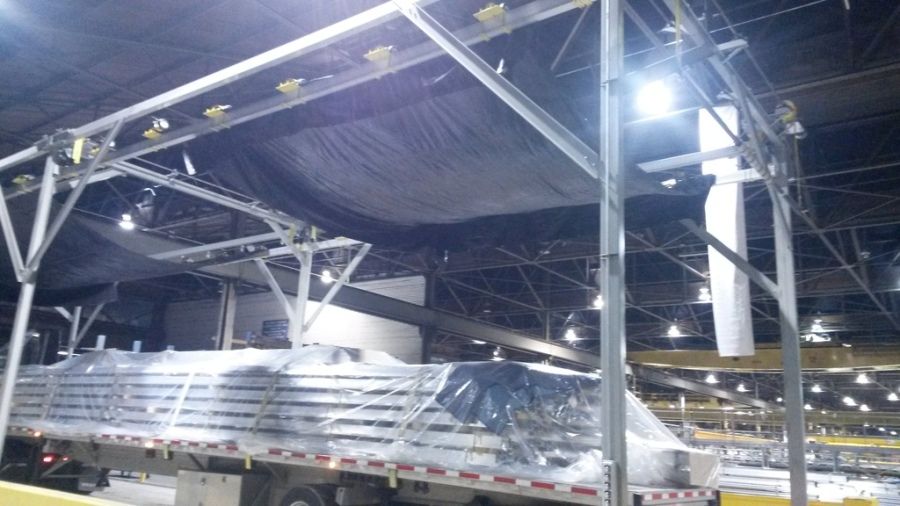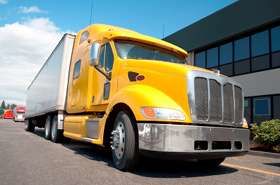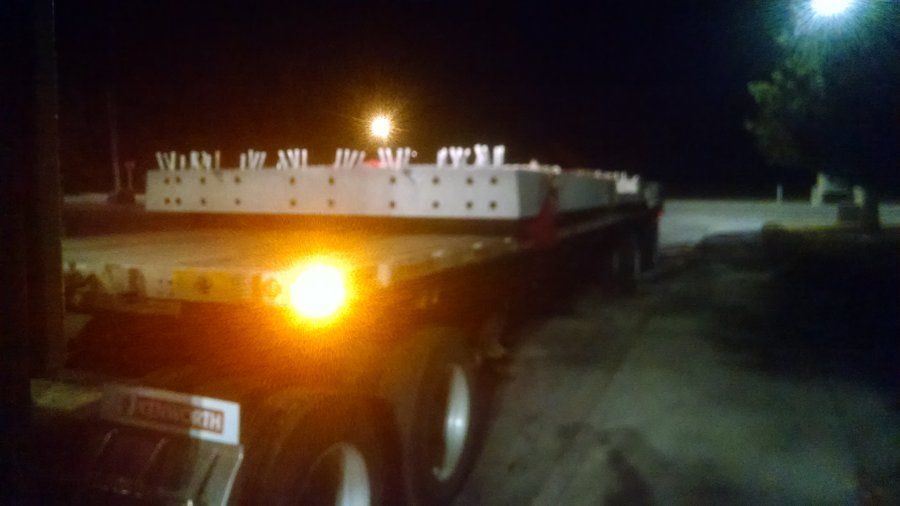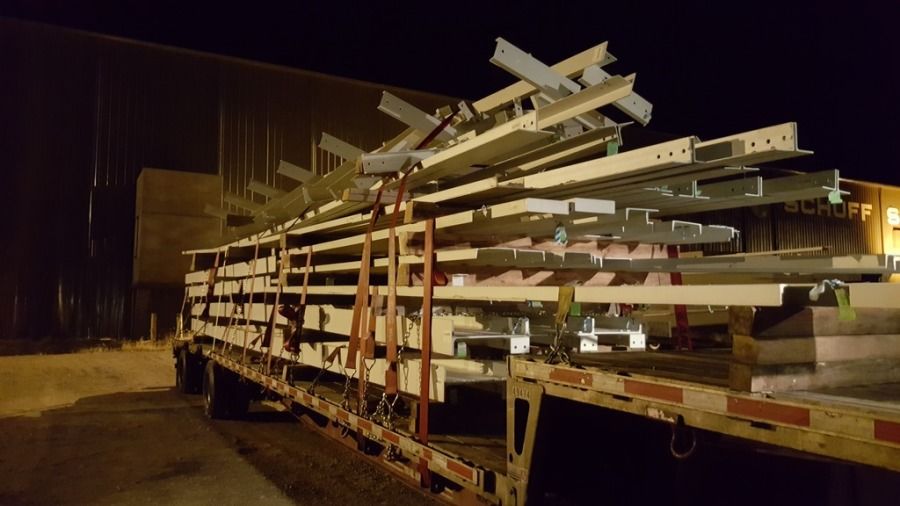Flatbed Variety
Topic 4373 | Page 96
First load was railroad parts going from Chicago to Springfield. This current load is a mess of structural steel that I picked up in Ottawa Kansas that's headed to the GM plant in Flint Michigan.
Would you tarp that second load (mess of structural steel), and if so, how, without ripping the tarp on those edges?
HOS:
Hours Of Service
HOS refers to the logbook hours of service regulations.
Bud, How are you doing? Are you back on the road yet?
Hey OS, thanks for asking! I still have about a month to go before I can be medically recertified. My old boss called me last week to ask whether I planned to come back and when I'd be able to. That was pretty encouraging, since apparently he wants me to come back!
Recovery is going well. I exercise for 45 minutes every day now, and have rehab every other day. I've also been working hard to develop better dietary habits. Right now I am only allowed to lift 20 pounds, but the rehab nurse told me I should be healed up good enough to lift tarps and chains in another month.
Somewhere in the back of my mind I'm constantly thinking about how to carry all this good behavior with me when I get back on the road. It will definitely take some deliberate effort and planning.
There is a job advertised here that involves hauling empty reefers between the factory and a local trailer dealer. I'm tempted because it would be so dang easy (except for the part where you're driving across Wyoming all the time with an empty reefer trailer!) so I might apply to see what happens.
Reefer:
A refrigerated trailer.
First load was railroad parts going from Chicago to Springfield. This current load is a mess of structural steel that I picked up in Ottawa Kansas that's headed to the GM plant in Flint Michigan.
Would you tarp that second load (mess of structural steel), and if so, how, without ripping the tarp on those edges?
Structural steel generally doesn't need to be tarped. There are some steel loads that have to be tarped where there are sharp edges, though usually not so messy as this structural steel load. (Think things like pipe and plate steel, where the load fits more or less into nice rectangular bundles.) Also, there are loads of finished aluminum with lots of sharp edges that look sort of like this that have to be tarped.
Loads like that can definitely tear up your tarps. The best method I have found to protect tarps is to carry some chunks of old tarp that have been cut up into rectangular pieces. They are easy to fold and stow when you don't need them, but they do a great job of protecting the tarps when you do need them. Basically you use them to make a layer between the product and the tarp so that the old tarp takes the abuse from the sharp edges. They can be folded to make double or triple or quadruple layers under the working tarps.
The bonus on the load in the picture is that it's on a stepdeck. When you have to tarp a load on a stepdeck , getting the tarp to fit nicely against the rub rail where the deck drops down a couple of feet takes some planning and practice.
Stepdeck:
A stepdeck , also referred to as "dropdeck", is a type of flatbed trailer that has one built in step to the deck to provide the capabilities of loading higher dimensional freight on the lower deck.
HOS:
Hours Of Service
HOS refers to the logbook hours of service regulations.
I used to carry six packing blankets for tarping loads with sharp edges. I would roll them up like a mini tarp to stow away when I wasn't using them.
First load was railroad parts going from Chicago to Springfield. This current load is a mess of structural steel that I picked up in Ottawa Kansas that's headed to the GM plant in Flint Michigan.
Would you tarp that second load (mess of structural steel), and if so, how, without ripping the tarp on those edges?
HOS:
Hours Of Service
HOS refers to the logbook hours of service regulations.Thanks Bud, thanks Chris!
Hey Pete, like Chris said, most flat-bedders carry some sort of blankets like the ones used by "bed-buggers" (truckers that move people's furniture).
If you take a look at this photo you will see the dark blue blanket across the top on the back of this load. It is underneath the poly sheeting laying on top of the aluminum extrusions. It's sole purpose is to keep the sharp edge of the metal from damaging the tarps.


I use carpet strips works great.

First load with new truck and first tank averaged 7.02 mpg. Omg it's a 1993, you can't get that kind of mileage. I was empty but I was also running the speed limit between 65 and 80 depending on the state.

So tell me Pat, is it exciting to have that kind of freedom, to choose your loads?
Would you recommend, having 2 years of experience before going out and being a owner operator?
Owner Operator:
An owner-operator is a driver who either owns or leases the truck they are driving. A self-employed driver.
OOS:
When a violation by either a driver or company is confirmed, an out-of-service order removes either the driver or the vehicle from the roadway until the violation is corrected.
New Reply:
New! Check out our help videos for a better understanding of our forum features

















Preview:
This topic has the following tags:
Advice For New Truck Drivers Choosing A Trucking Company Flatbed Hard Lessons Learned Load Securement Photos Truck Driving Stories








 TT On Facebook
TT On Facebook
Bud, How are you doing? Are you back on the road yet?